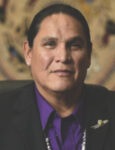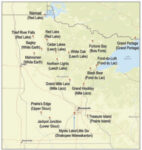
I was on my way to the groundbreaking of a tribe’s casino expansion and reflecting about how far casino development has progressed for tribes around the country.
The groundbreaking event was several years in the making, and the project will elevate the tribe’s current casino into a premier destination resort. The impetus for the expansion and renovation plan came from tribal leadership who saw potential for their casino to capitalize on the traveling public’s desire for premium gaming and entertainment experiences. The tribal council worked together, had a consistent vision for what they wanted for their tribe, even through multiple elections, and is developing a stronger economic future for their tribal members and the surrounding community. This tribe’s story of success is the story of many tribes around the country.
At the event, I had the opportunity to speak with another Native business owner in the design and construction industry and asked him what he thought about the shift in tribal development, and he agreed that tribal development is increasing in sophistication. Tribal leaders are stepping into leading development roles and demanding best-of-class execution at all levels, including casino executives, project management companies, architects, interior designers and purchasing. This rising level of sophistication translates to better projects and opportunities for Native communities to expand their sphere of influence off their reservations. Tribes can compete with commercial gaming enterprises and win.
The rising level of development sophistication is best examined within three categories:
Ownership Expectations
Can tribal leaders come together and distill what their goals are for their development? Are those goals quantifiable in terms of a return on investment, project duration and other qualitative goals? If tribal leadership has a clear understanding of what their goals are, they can work towards those ends, and when disagreements arise in the minutia, they can still stay focused on the larger development goals.
That clarity of thought by tribal leadership is the foundation that provides direction for the entire project team. Utilizing pre-development services, feasibility experts and conceptual master planning provides tribes with the same tools used by world-class developers to achieve their goals. That also helps tribes maintain focus during leadership changes.
Project Management
Once tribes have their goals defined in a measurable way, the most successful tribes have engaged with professional project owner’s representatives. Those professionals are either brought in-house of the tribal development offices or hired as independent owner’s representative companies. The value of a qualified owner’s representative cannot be overstated.
The best projects have clearly defined lines of communication, have an empowered leader that clearly understands the owner’s goals, and hold the entire team accountable to meet those goals. This does not mean that tribal leaders blindly rely on the project management company; tribal leaders leverage the expertise of the project managers to achieve their goals and refine the execution to be consistent with the industry method of project delivery.
Purchasing
We founded PMI-Tribal Services because we understood that the stakeholders for tribal development had a different perspective than typical commercial gaming. The decisions on a tribal gaming project reflect the past traditions of a community and a pathway for future generations. When a tribe hires a firm to design their new development, that designer’s specifications are the technical expression of the tribe’s goals for their project. To execute those goals properly, more and more tribes realize that professional project FF&E purchasing expertise is required. As casinos and hotels in Indian Country become more complex and the budgets continue to grow, tribes can leverage their buying power by changing the way they source and procure the FF&E and OS&E.
In the past, many tribes purchased their furniture from dealers. This resulted in poor design execution, inflated costs and a lack of transparency into project deliveries. Tribes that want to develop the best projects will utilize purchasing companies instead of a dealer. Some companies may claim to be a hybrid of a purchasing agent and furniture dealer, or they may claim to deliver a project with their preferred vendors—those companies are not purchasing companies, they are dealers and do not operate for the benefit of their client. A true agent-only purchasing company is always on the tribe’s side, operating in a transparent manner and always looking for the best interest of the tribe.
Professional project purchasing agents focus on design execution working directly with manufacturers. This transparent method of sourcing FF&E connects the tribe directly to manufacturers, resulting in significant project savings that all belong to the tribe. Working in collaboration with the designer and contractor, the project purchasing company coordinates the production and delivery to match the project schedule. This helps maintain the critical path of a contractor’s work without sacrificing design considerations. Just like a construction project manager manages the work of a general contractor, a project purchasing agent manages the work of all the vendors providing all the guest touch items in a project.
The shift in tribal development to a more sophisticated project delivery method will result in better projects that achieve the tribe’s goals. Wise tribal leaders will seek out partners in the project management and purchasing discipline as part of their plan to achieve their long-term goals.














